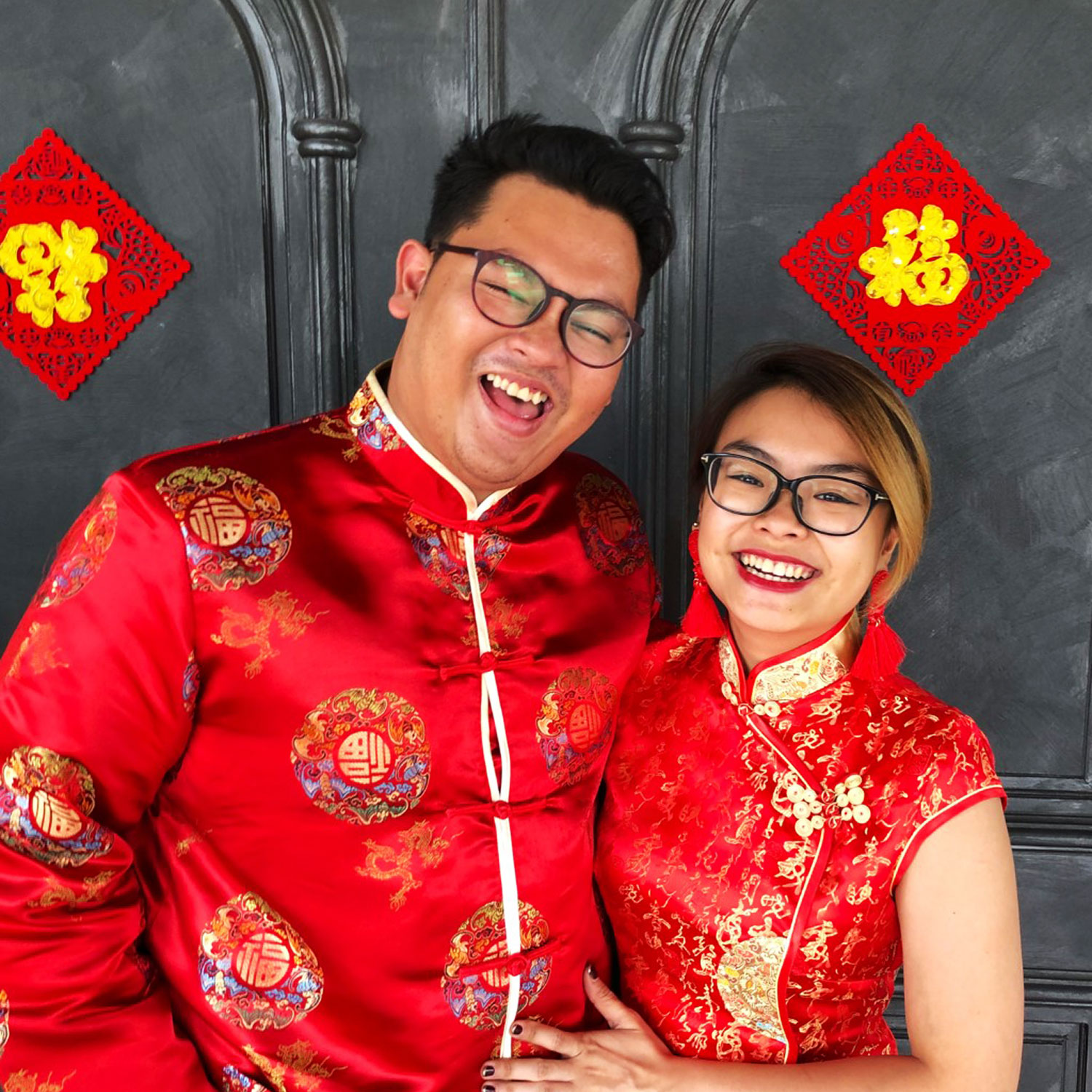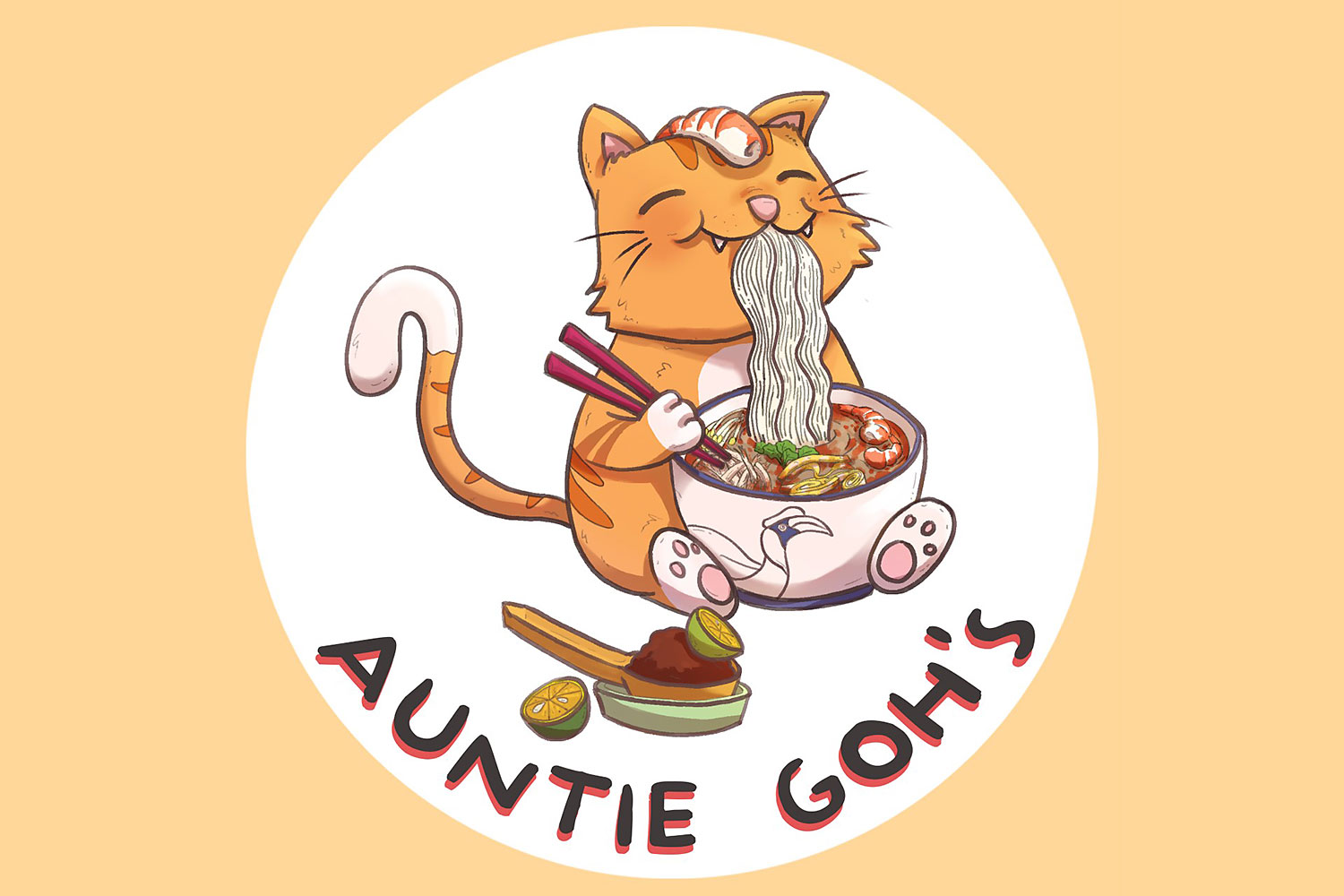Once described by Anthony Bourdain as "breakfast of the gods", Sarawak laksa is unique to the island of Borneo. Until it featured on Bourdain's TV shows No Reservations and Parts Unknown, "one of the foods served in heaven" rarely made its way off the island.

Auntie Goh's, headed by Michelle Goh and partner Pongcharn "Top" Russell, is giving Bangkok a taste of this virtually unheard of noodle dish starting this weekend.
"Laksa", a very loose term used to describe various types of noodle soup dishes, isn't as popular as Penang Asam laksa or Singaporean laksa. The paste, which is the heart and soul of Sarawak laksa, is made from a combination of spices and has a prawn-like undertone in terms of flavour. Sarawak or Kuching laksa is more of a spice broth with a splash of coconut cream though it is not a curry-based broth. And it is the broth that makes any good laksa, as connoisseurs would agree.
"Sarawak laksa doesn't really have any variations. Mainly because, the paste is very similar and made the same way. If you were in Kuching and ate laksa at various stalls and restaurants, they would be different because everyone makes it differently but the base spice paste is the same," says Goh.
"This is vastly different from the heavier laksa. It's milder and more delicate compared to any others. The similarities are quite small in reality, but it's very distinct," adds Top.
Both chefs tried to make the spice paste themselves, but since this breakfast comfort classic comes out of a home kitchen, it was difficult. While researching the paste, they quickly learnt that most places serving this laksa sourced the paste from one particular family in Kuching. Auntie Goh's imports the paste from here. The paste locally-made and ingredients for it are sourced fresh from the Borneo landscape. So it was imperative that the Sarawak laksa was made with this paste, which is the soul of the laksa.

Michelle Goh and partner Pongcharn ‘Top’ Russell of Auntie Goh’s. (Photos courtesy of Auntie Goh’s)
Traditionally served for breakfast, a bowl of Sarawak laksa contains vermicelli noodles, bean sprouts, omelette stripes, shredded chicken breast and prawns. All dunked into a laksa broth and served with sambal belacan and calamansi on the side.
"When you eat Sarawak laksa, everything needs to be eaten together though there are two ways of eating it. One is to squeeze the calamansi into the belacan, dip the protein into this mixture and add it to the noodles. If you want more depth of flavour, add everything to the bowl of noodles," says Goh. Bear in mind that even though Sarawak laksa may look daunting with its fiery colour, the spice level is extremely mild.
The broth takes two days to make and is a combination of two broths. The first has a chicken base and is simmered for 10 hours. The paste is lightly roasted and is added, along with a prawn base broth, to the first broth. "This is to ensure that the flavour profiles are all distinct," says Top. The broth is made the night before it is sent out. So if you order it for Saturday, the broth is made on Friday and Sunday orders get Saturday's broth.
The sambal belacan that comes with Auntie Goh's laksa is made from scratch and in-house or in this case at home. "The belacan took us almost a month to create and we ended up with the most difficult one to make. It has a tomato base, though it's not a huge amount; a lot of red chilli, three types actually, which gives it a nice complexity without adding the spice quotient. The main thing is the belacan itself, which is lightly grilled. Since we are making it out of a condo kitchen, it took me four days to make the first batch," laughs Top.

The most difficult part working out of a home kitchen is grilling all the veg that goes into the belacan, which takes around five hours. Auntie Goh's homemade belacan is made with chilli, tomato, lemongrass, ginger, which is not traditional but is added because Top wanted a complex belacan. "We put a lot of our fine dining knowledge into the making of this belacan. This is perhaps, the only element that isn't traditional and is completely smooth, whereas normally a belacan has a grainy texture," says Top.
This limited edition, pre-order-only laksa will be available for another month or till early October, with Auntie Goh's serving around 30-35 bowls each weekend.
"We are doing this for fun, something to keep us going while we wait for Mia, [which is under the culinary helm of Top and Goh] to open. We don't really plan to do this long-term. We want to give people a taste of one of my favourite dishes and something that is hard to find outside of Kuching, especially a good version of it," adds Goh.
In case you're wondering where the "auntie" comes from, it is a cultural sign of respect in South Asia and Southeast Asia to refer to your elders as "aunty" or "uncle", regardless of any blood connections.
"When you go out for a bowl of laksa, you always say 'Hey aunty, can I have a bowl of..' and so Top thought it was funny to call me 'Auntie Goh'. That's how the name came about," laughs Goh.
The word "Kuching" translates to "cat" in Malay and it is, therefore, known as "Cat City". "This is why we choose a cat for our logo, to represent Sarawak laksa. There's also a little hornbill on the side of the bowl as a nod to the old school Chinese chicken bowls and our national bird, the hornbill," says Goh, whose hometown is Kuching.
A bowl (or two) of the unique Sarawak laksa can be ordered via IG: @auntiegoh. The laksa comes in two sizes: Regular for B230 and Special for B300. Prices do not include delivery.
